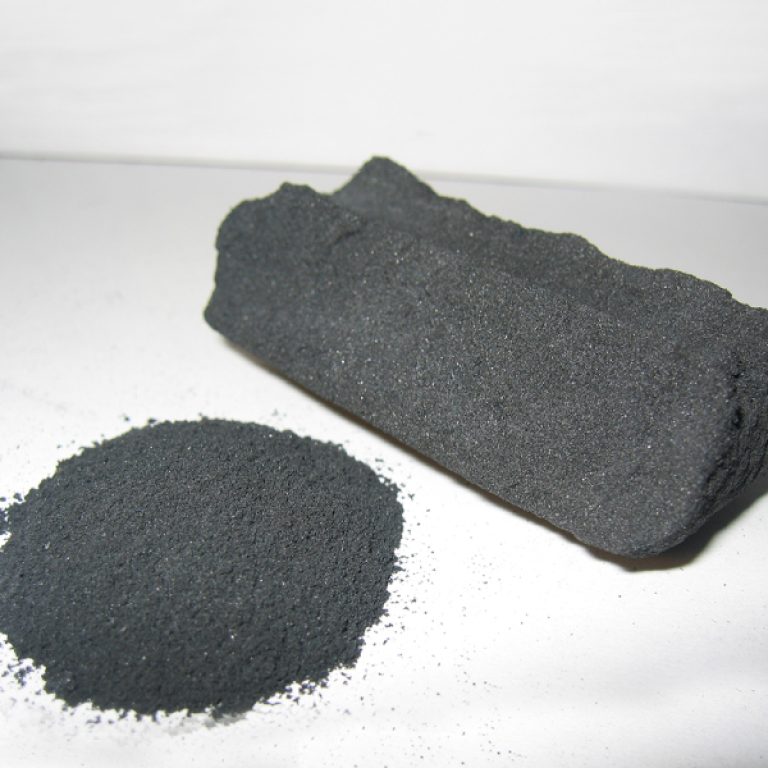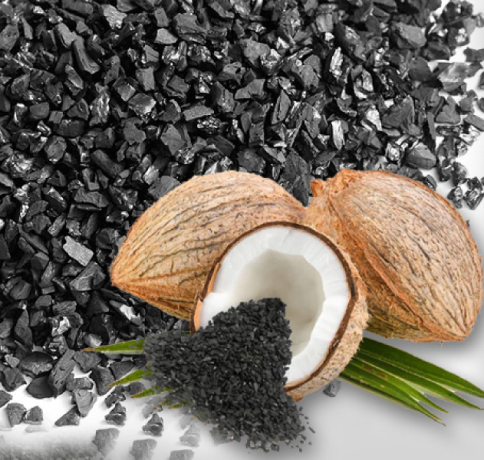Filtration
Filtration is used to produce drinking water from groundwater by employing pressure filters with custom filter media layers to neutralize aggressive carbon dioxide and remove iron, manganese, ammonium, and impurities. It also serves as a pre-treatment or final treatment in water plants for applications like circulation water, water recovery, boiler water, cooling water, wastewater, and recarbonation.


Activated Carbon Filter
What is Carbon?
Activated Carbon Filter
What is Carbon?
Activated carbon in water filtration uses small pores to increase surface area, trapping contaminants like chlorine and pesticides, purifying water, and improving taste and odor.
How Activated Carbon is made or produced?
- Activated carbon is made from carbon-rich substances such as coal, wood, or coconut shells.
- The materials undergo a process that involves heating them to very high temperatures.
- This activation process creates a highly porous structure with a large surface area.
The porous structure boosts carbon’s ability to adsorb impurities from water or air.
Principle of Activated Carbon in Water Filtration
Activated carbon filtration relies on adsorption, using its porous structure and large surface area to trap impurities, chemicals, and contaminants, improving water quality and taste by removing odors, flavors, organic compounds, chlorine, and pollutants.
Activated Carbon Features:
Adsorption
Activated carbon has a high surface area and porous structure, allowing it to adsorb impurities, contaminants, and odors from water as it passes through the filter.
Longevity
Activated carbon filters typically have a long lifespan and can effectively purify water over an extended period before requiring replacement.
Versatility
It effectively removes contaminants like chlorine, volatile organic compounds, pesticides, herbicides, and various chemicals, improving the overall quality and taste of water.
Environmental Friendliness
Activated carbon, sourced from natural materials like coal, wood, or coconut shells, is an eco-friendly choice for water filtration compared to synthetic alternatives.
Chemical Stability
Activated carbon is chemically stable and non-reactive with water, ensuring it safely filters water without introducing harmful substances.
Cost-Effectiveness
Despite their effectiveness, activated carbon filtration systems are affordable, offering an economical solution for enhancing water quality in both residential and industrial settings.
Advantages of Activated Carbon
Effective Adsorption
Improves Taste and Odor
Environmental Sustainability
Removal of Organice Contaminants
Versatility
Chemical Stability
Cost-Effectiveness
Disadvantages of Activated Carbon
Limited Removal of Inorganic Compounds
Adsorption Capacity
Microbial Growth
Environmental Impact
Flow Rate Reduction
Chemical Stability
Limited Effectiveness for Certain Contaminants
Sand Filtration
Sand filtration is a widely used method for water purification, especially in municipal water treatment plants and swimming pool filtration systems. It involves passing water through a bed of sand to remove impurities and particles suspended in the water.
Principles of Sand Filtration
Mechanical Filtration
Sand filtration operates on the principle of mechanical filtration, where particles present in the water are physically trapped within the sand bed.
Gradation of Sand
The sand bed has multiple layers different-sized particles: coarse sand at the top traps larger particles, while finer sand layers below capture smaller particles.
Interception & Straining
As water flows through the sand bed, particles are trapped by the sand grains, and smaller particles are filtered out by the tighter gaps.
Features of Sand Filtration
1
Sand Bed
The primary component of sand filtration is the sand bed, which can vary in depth depending on the application
2
Filter Media
Although sand is the most common filter media, materials like anthracite, garnet, and activated carbon can also be used based on specific filtration needs.
3
Support Structure
A support structure, typically made of gravel, is placed at the bottom of the filter to provide stability and allow for even distribution of water flow.
4
Distribution System
To maximize filtration efficiency, a distribution system makes sure that water is evenly distributed across the whole surface area of the sand bed.
- 1
Sand Bed
The primary component of sand filtration is the sand bed, which can vary in depth depending on the application
- 2
Filter Media
Although sand is the most common filter media, materials like anthracite, garnet, and activated carbon can also be used based on specific filtration needs.
- 3
Support Structure
A support structure, typically made of gravel, is placed at the bottom of the filter to provide stability and allow for even distribution of water flow.
- 4
Distribution System
To maximize filtration efficiency, a distribution system makes sure that water is evenly distributed across the whole surface area of the sand bed.
Advantages of Sand Filtration
➙ Effective Particle Removal
Sand filtration is highly effective in removing suspended solids, turbidity, and certain microorganisms from water, resulting in clearer and safer water.
➙ Simple Operation
Sand filtration systems are relatively simple to operate and maintain, requiring minimal technical expertise.
➙ Low Cost
Compared to other water treatment methods, sand filtration systems have lower initial setup costs and operating expenses.
➙ Versatility
Sand filtration can be adapted for various applications, ranging from small-scale household filtration units to large-scale municipal water treatment plants.
Disadvantages of Sand Filtration
➙ Limited Filtration Capacity
Sand filtration may not effectively remove very fine particles or dissolved contaminants from water, requiring additional treatment steps.
➙ Backwashing Requirements
Regular backwashing of the sand filter is necessary to remove accumulated particles and restore filtration efficiency, leading to water wastage and energy consumption.
➙ Biofilm Formation
Over time, biological growth within the sand bed can occur, reducing filtration efficiency and necessitating periodic cleaning and maintenance.
➙ Space Requirements
Sand filtration systems require a significant amount of space for installation, especially in larger-scale applications, which may pose challenges in some environments.
Sand filters are a key step in water purification, with three main types: rapid (gravity) sand filters, upward flow sand filters, and slow sand filters. Rapid and upward flow filters need flocculant chemicals, while slow sand filters can remove 90% to 99% of pathogens, along with taste and odor, without chemicals. These filters are widely used in the water industry and can also be applied for household water purification using commonly available materials.
Working Principle
In a Pressure Sand Filter, water passes through layers of graded sand, pebbles, and gravel, trapping contaminants in the media bed. The filtered water then exits through the discharge manifold at the tank's bottom. Backwashing removes captured contaminants, after which the filter is rinsed and returned to service once the water quality meets standards.

Applications
It is extensively used in side stream filtration of potable water treatment.
- It is ideal for filtration of clarified water.
- It is used for seawater and chemical solution filtration, with options for rubber-lined or epoxy-painted filters.
Pre-treatment for Reverse Osmosis System.
Pre-treatment for drinking water in housing societies, hotels and shopping malls.
Swimming Pool Filtration in Housing Societies & Hotels.
- Pre-treatment for Cooling towers and boiler feed.
Parameters | Rapid gravity/pressure | Slow sand |
|---|---|---|
Filter Media | Sand, granular-activated carbon or anthracite | Sand |
Filteration rate (MH-1) | 3-10 | 0.2 |
Filter run length | 24hrs | 60 days |
Cleaning | Air scour and upwash | Surface skim |
Mechanism | Physical entrapment in media depth | Physical entrapment in media surface, biological digestion |
Pretreatment | Almost always used with coagulation | Microstraining or roughing filteration |
Micron filtration
Micron filtration is a type of filtration process used to remove particles and impurities from fluids based on their size. It operates on the principle of physically trapping particles larger than a specified micron size within a filter medium.
Principle of Micron Filtration:
Size Exclusion
Micron filtration relies on a filter medium with microscopic pores, typically measured in micrometres (microns), to trap particles larger than the pore size while allowing smaller particles and fluid to pass through.
Mechanical Filtration
The filtration process is primarily driven by mechanical means, where particles are physically captured within the filter medium as fluid passes through.

Features of Micron Filtration
Filter Media
Micron filtration can employ a variety of filter media, such as woven or non-woven fabrics, membranes, ceramic filters, and metallic screens, depending on the specific application and particle removal needs.
Micron Ratings
Filters are often rated based on their nominal or absolute micron rating, indicating the size of particles they can effectively capture.
Flow Rate
The flow rate through a micron filter depends on factors such as filter media type, pore size, and operating pressure, influencing the filtration efficiency and throughput.
Advantages of Micron Filtration

Particle removal
Micron filtration effectively removes particles and impurities of a specified size range, improving the quality and purity of the fluid.

Versatility
Micron filtration can be tailored to specific applications by selecting filters with appropriate micron ratings and filter media types.

Ease of installation
Micron filtration systems are compact and easy to install, suitable for various industrial, commercial, and residential applications.

Low operating costs
Compared to some other filtration methods, micron filtration systems often have low operating costs and require minimal maintenance.
Disadvantages of Micron Filtration

Limited particle size
Micron filtration may not effectively remove particles smaller than the pore size of the filter medium, requiring additional filtration steps for finer particle removal.

Pressure Drop
As particles accumulate on the filter medium, the pressure drop across the filter increases, reducing flow rates and necessitating periodic cleaning or replacement of the filter.

Clogging
Depending on the fluid composition and particle load, micron filters can become clogged over time, affecting filtration efficiency and requiring maintenance.

Selective Filtration
Micron filtration effectively removes physical particles but may not target dissolved substances or biological agents, requiring additional treatment if needed.

ULTRAFILTRATION
Ultrafiltration is a type of membrane filtration process used for separating suspended solids, macromolecules, and colloidal particles from water. It operates on the principle of size exclusion, where molecules larger than the membrane's pore size are retained while smaller molecules pass through.
Principle of Ultrafiltration
Principle of Ultrafiltration
Ultrafiltration is a membrane filtration process separates suspended solids, macromolecules, and colloidal particles from water based on size exclusion. Molecules larger than the membrane's pores are retained, while smaller ones pass through.
Features
- Membrane Technology
- Pore Size
- Pressure-Driven Process
Advantages
- Effective Particle Removal
- Selective Separation
- Low Energy Consumption
- Minimal Chemical Usage
Disadvantages
- Membrane Fouling
- Limited Salt Rejection
- Higher Initial Costs
- Complex Operation
NANO FILTRATION
Nano filtration is a specialized filtration process used in water treatment to selectively remove certain ions and molecules while allowing others to pass through. It operates on a smaller scale than reverse osmosis but larger than ultrafiltration, making it suitable for various applications where precise control over water composition is required.

Principle of Nanofiltration
Principle of Nanofiltration
Selective Permeability: Nano filtration membranes have tiny pores that allow the passage of water molecules and certain ions while blocking larger ions and molecules.
Pressure-driven Process: Nano filtration relies on pressure to force water through the membrane, separating solutes based on size and charge.
Pressure-driven Process: Nano filtration relies on pressure to force water through the membrane, separating solutes based on size and charge.
Features
- Membrane Technology
- Ion Selectivity
- Tunable Filtration
Advantages
- Selective Removal
- Energy Efficiency
- PH Tolerance
- Reduced Fouling
Disadvantages
- Limited Salt Rejection
- Membrane Sensitivity
- Complexity and Cost
- Selective Removal



